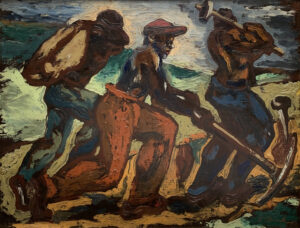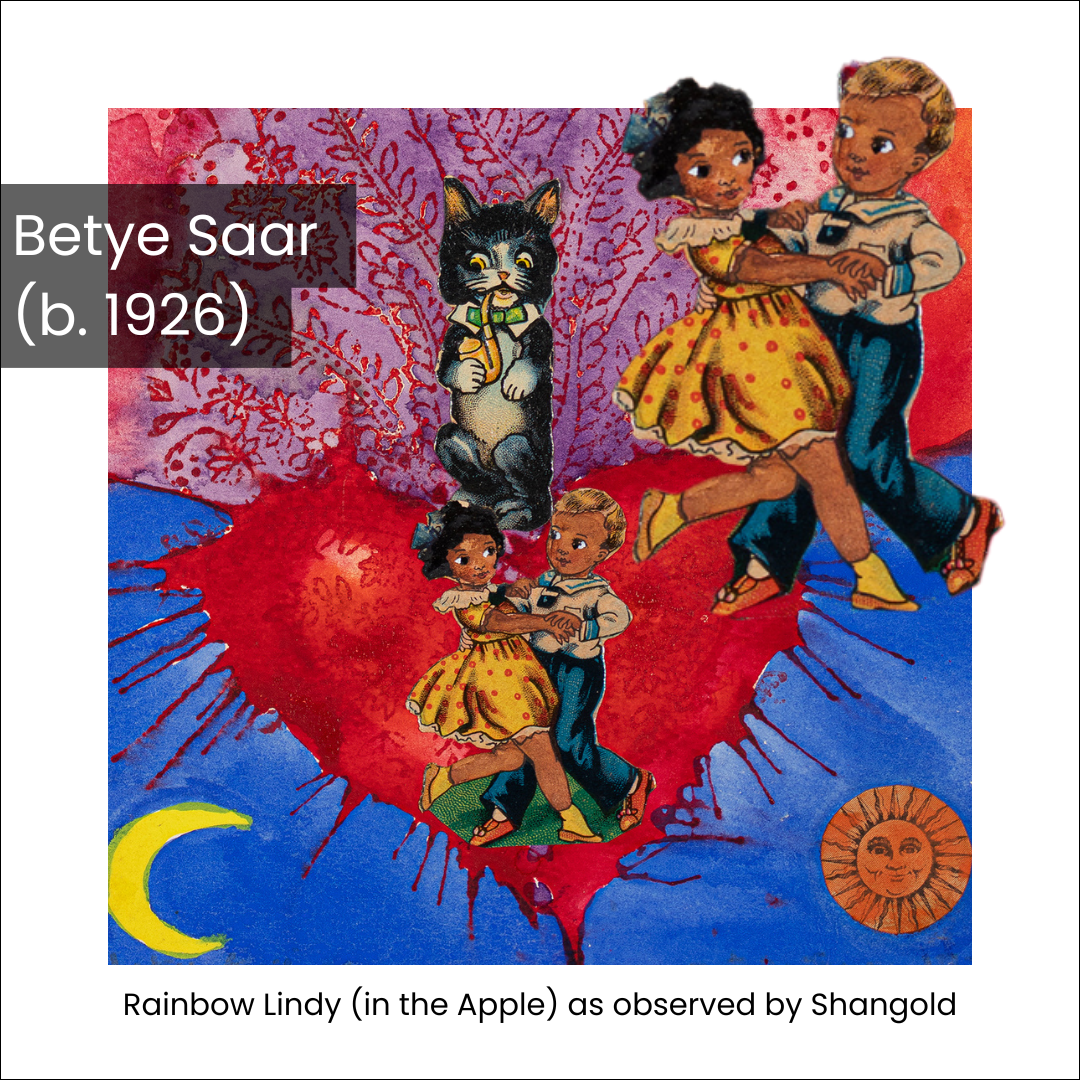Claude Clark (1915-2001)

“I heard the other students called me a “filthy Modernist,” because I was applying the paint with a palette knife. One of the critics of one of my exhibits in New York – The New York Times – said it was a technique of “clotted impasto.” I have no name for what I do. I have seen it listed as “Neo-primitive”, “Neo-Baroque.”
Claude Clark Sr., A Reminiscence, International Review of African American Art, v. 10, no. 3, pp. 40-47, 58-59.
Clark’s work is featured in Lot 19 and Lot 20 of the Melvin Holmes Collection. You can view the entire catalog here.

Born on a tenant farm in Georgia in 1915, Claude Clark moved to Philadelphia with his family during the Great Migration in search of better economic opportunities. Following graduation from high school, Clark attended the Philadelphia Museum School of Art from 1935-1939, as well as receiving training from the Albert Barnes Foundation from 1939-1944. Clark worked for the WPA during the years of the Great Depression, creating prints and learning new techniques of etching from Dox Thrash.
Clark is best known for his oil paintings – his early works were heavily influenced by French painters – as exemplified by his use of the palette knife to create texture and his use of heavy, dark lines to outline fluid shapes; however, his affiliation with Albert Barnes shaped his appreciation of African Art and encouraged him to concentrate on images of African Americans. Rural life in the South and the Caribbean have been recurring themes throughout his career.

Clark helped to establish the art department at Talladega College and taught there from 1948-1955 – succeeded by none other than David Driskell, when he left for Oakland, CA. While there, he furthered his
studies at Sacramento State College and the University of California, Berkeley. He taught at Merritt College in Oakland and, spurred on by the Black Panther Party, wrote A Black Art Perspective: A Black Teacher’s Guide to a Black Visual Arts Curriculum.
Melvin Holmes’s collection of works by African American artists included four excellent examples by Clark that reflect his quintessential style and social realist subject matter. Offered here are the paintings, Work Song and On Guard. Clark likely drew from cultural observations and personal experiences from his early life in Manayunk, Pennsylvania and Philadelphia.
Clark’s work has been featured in major group exhibitions throughout his career, including:
- American Negro Art, 19th and 20th Centuries, Downtown Gallery, NYC, 1942
- The Negro Artist Comes of Age: A National Survey of Contemporary American Artists, Albany Institute of History and Art, NY, 1945
- The Evolution of Afro-American Artists; 1800-1950, City College, CUNY, NY, 1967
- Two Centuries of Black American Art, Los Angeles County Museum of Art, CA, 1976
- Black Artists / South, Huntsville Museum of Art, AL, 1979
- Unbroken Circle: Exhibition of African American Artists of the 1930’s and 1940’s, Kenkeleba House, NY, 1986
- In Search of Missing Masters: The Lewis Tanner Moore Collection of African American Art, Woodmere Art Museum, PA, 2009
- African American Art: Harlem Renaissance, Civil Rights Era, and Beyond, Smithsonian American Art Museum, DC, 2012
He has had solo exhibitions at Bonstell Gallery, NY, 1945; Roko Gallery, NY, 1946-47; Crocker Art Museum, Sacramento, CA, 1956; and the Thelma Harris Gallery, 1997, 1999, and 2003.

In addition, he has been lauded in retrospective shows including, A Retrospective Exhibition, 1937-1971: Paintings by CLAUDE CLARK, Carl Van Vechten Gallery, Fisk University, TN, 1972; Fifty Years of Paintings by Georgia Artist CLAUDE CLARK, Hammonds House Museum, GA, 1990; and CLAUDE CLARK: On My Journey Now: A Selection of Paintings from 1940-1986, APEX Museum, Atlanta, GA, 1996
His work is found in the collection of the Metropolitan Museum of Art, NY; Fisk University, TN; Library of Congress. Washington, D.C.; National Gallery of Art, Washington, D.C; Atlanta University, Atlanta, GA; and the Smithsonian American Art Museum.
REF: Holland, Juanita Marie. Narratives of African American Art and Identity: the David C. Driskell Collection: Published in Conjunction with the Exhibition of the Same Title ; The Art Gallery, College Park, Maryland, October 22 – December 19, 1998 … Pomegranate, 1998: 121.
Claude Clark Sr., A Reminiscence, International Review of African American Art, v. 10, no. 3, pp. 40-47, 58-59.
The Johnson Collection, https://thejohnsoncollection.org/claude-clark-sr-/



